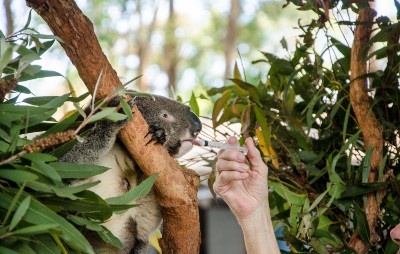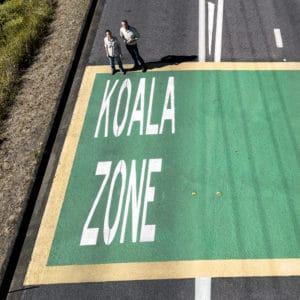Collision with cars is a common cause of koala injury and death. When driving, stick to speed limits, be vigilant near koala crossings, and be aware of signs warning that koalas are in the area.
If you see a roadside wildlife fence damaged or with branches touching it, report it to Transport for NSW on 13 22 13.
Vehicle strike has played a key role in the decline of koala in New South Wales. It is one of the most frequently reported causes of injury and death for koalas brought into care by wildlife rehabilitation groups.
Under the NSW Koala Strategy, $10.6 million is being invested over 5 years to address koala vehicle strike hotspots across the state. Treatments include measures to encourage drivers to slow down and structures to keep koalas and other native wildlife off roads, such as fencing and underpasses.
Tips for drivers
If you're a driver, you can help reduce the likelihood of koala vehicle strike by driving responsibly:
- slow down, especially at dusk and dawn
- be more vigilant when driving through known koala areas
- take note of roadside warning signs and seasonal signs
- be aware of pavement treatments and rumble strips
- take notice of speed limits
- take extra care between July and November, when males are moving around in search of new territory and mates.
Koala vehicle strike information
- Vehicle strike hotspots are likely to occur where a road cuts through habitat that serves as a corridor for movement of wildlife
- How fast a vehicle is going plays a major role. Studies demonstrate that the likelihood of collision increases over 60 kilometres an hour, while lower speeds reduce wildlife vehicle strike and injury severity, and increase the likelihood of survival
- Koalas readily move across roads and open ground, especially during the koala mating season between July and November
- Koalas are most active in the early morning and evening. They are more likely to attempt to cross the road and be struck by vehicles at these times. Low-light conditions at dawn and dusk may also make it harder for drivers to see them
Koala vehicle strike factsheets
You may also be interested in


